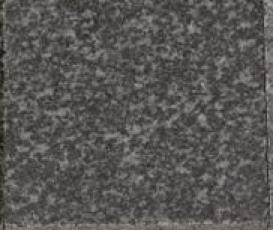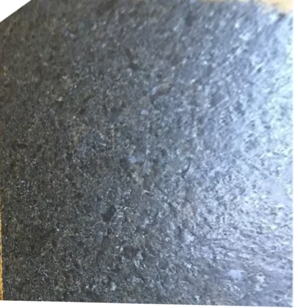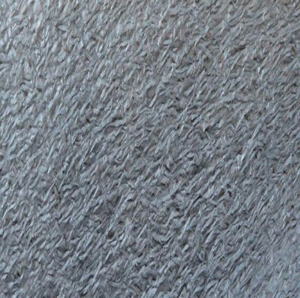 Home & Garden
Home & Garden
 Countertops
Countertops
 Granite Finishes
Granite Finishes
Don's Home
 Home & Garden
Home & Garden
 Countertops
Countertops
 Granite Finishes
Granite Finishes
|
| Countertops | Care of Granite | Granite Finishes |
There are 6 types of finishes for granite: The first 2 Polished, Honed and Leathered are the most common.
Polished

The most common finish for granite countertops is polished.
The polished finish makes the surface of the granite countertop glossy and almost mirror-like.
With a polished finish, the characteristics of the stone are highlighted. The colors and textures will be more vibrant.
The polished finish it the easiest surface to clean; it is easy to keep countertops with a polished finish looking brand new as well.
Additionally, the polished finish seals the pores of the stone to keep water and moisture out of the stone.
Care for polished granite includes both resealing and polishing the stone in addition to keeping it clean.
Honed (Matte, Satin or Buffed Finish)
Honed stops the finishing process before polishing so is not as shiny.

Honed, creates a very smooth surface without any gloss or reflection.
To create this finish, the regular polish finishing process ends before the stone is buffed to create a flat finish, which is sometimes called a satin finish. Honed finishes are most popular on floors to prevent people from walking on the slippery surface created by polished stones. This finish can also be used on countertops, but it makes the granite more susceptible to staining.
Since honed granite isn't as slippery or stain-resistant than polished granite, you might need to reseal it more frequently. However, you won't need to add polish to the stone.
Leathered (brushed or textured)
Leathered is created by running diamond-tipped brushes over it after honing to add texture with subtle dimples


The leathered finish, also called the brushed finish, is a relatively new finishing style.
Leathered finishes tend to look more sophisticated. Leathered countertops often keep the color of the natural stone, unlike with a honed finish.
While it does retain more of the natural color, it's more commonly used on darker stone.
When compared to honed granite, leathered granite will be more stain-resistant. This surface finish hides water spots, fingerprints, and smudges.
Flamed
Granite is the only natural stone that can have a flamed finish due to the high heat applied to the surface of the stone. This makes the flamed finish pretty rare; in fact, it is most popular for outdoor kitchens.
To create a flamed finish, granite is heated under extreme temperatures that cause the grains in the stone to burst and change color.
The final product has a rougher surface with a natural and faded appearance. Countertops with flamed finishes are usually muted in color.
Caressed
The caressed finish is created by taking the leathered finish and adding some shine to it.
To do this, the raised areas of the stone are polished, which creates a sheen on those surfaces.
This look is considered both elegant and rugged.
Additionally, this process seals the pores of the stone to keep it protected from moisture.
Bush Hammered
While this isn't a common finish for granite countertops, it is one that you should consider.
The finish is created using a tool that looks like a meat tenderizing hammer with triangular points on it. This tool is struck against the surface to provide a naturally weathered look with a slightly textured surface.
This technique also tends to lighten the color of the stone.
There are additional finish options, but most of them are just used for decorative purposes, because they are too porous and hard to clean to be used on countertops.
See 6 Different Finishes for Granite Countertops | Rock Doctor
Which Granit Countertop Should I Choose | CapitolGranite.net
| Polished Granite | Honed Granite (Matte, Satin or Buffed) | Leathered Granite (brushed or textured) |
|
|---|---|---|---|
| Lowest cost among the three | Middle ground in price for the three options | Highest cost among the three | |
| Readily available | Will give your countertop a matte look | Not widely available | |
| Easy to care for | Provides more of a natural look than the other finishes | Will give your countertop a rustic look | |
| Will not require frequent sealing | Highlights the natural coloring of the stone | ||
| Will give your countertop a distinctive shine | |||
Pros:
|
Pros
|
Pros
|
Leathered Granite Maintenance and Pros & Cons | Remodel Works
Leathering has become the new, most interesting, and, frankly, unique way to finish your perspective countertop. The process takes that boring old granite slab and turns it into a living, breathing monolith of contoured and beautifully colored igneous rock.
Many people feel the texture of a leathered finish enhances the stone's natural color and provides a truly modern and sophisticated look. And what's more, the process involves moving diamond-tipped brushes across the surface of granite, and the result of this process actually makes the stone more stain resistant because the stone pores are closed.
Leathering granite is an intense and difficult process that is best left to professionals. To achieve the trademark rough surface and slightly matte look of a leather finish, a diamond tipped brush is run over the stone's surface repeatedly. This strips away imperfections and polishes the stone while leaving the natural contours and grooves intact. Much depends on the fabricator or homeowner's appetite for texture, as a leathered finish can leave your granite almost perfectly smooth or as rough as you'd like. After the desired texture is achieved the granite will be sealed (usually) and ready to install. It should be remembered that leathered granite does have both pros and cons due to its unique design and textural surface.
PROS
Hard to Stain: Leathering granite is known to tighten the natural pores of the stone and thus mitigate damage done through spillage. Stains, the great enemy of all countertops, will not be able to coalesce as well as they would in a polished or honed surface due to this phenomenon, making a leathering an excellent choice for a stain-resistant surface.
The biggest and most often overlooked factor, bacterial resistance, is much higher than it would be for a honed or polished countertop. This is once again due to the tighter pores of the stone, achieved through keeping intact the natural contour and solidity of the granite.
CONS
Easier to Scratch: The fact of the matter is all the grooves and imperfections that make leathering such a cool and unique style of finish have the often-unforeseen potential to be chipped and cracked if they are accidentally met with a sharp or hard item. This can damage your leathered granite and make for a chalky, stone dusted surface.
The best way to mitigate this is to make sure your supplier and installer seal your granite surface with a powerful sealant. The natural contours and grooves of your leathered granite are the reason you chose this finish in the first place and it is a terrible thing to see those beautiful features become a hindrance. If your leathered granite is showing signs of wear and tear, consult with a professional as soon as possible.
Trickier to Clean: Due to its uneven nature, leathered granite can be more difficult to wipe clean than its honed or polished cousins. Crumbs can find their way into its cracks and liquids can pool in its grooves. The truth of the matter is that this will always come down to the exact texture you have chosen for your leathered granite. Rougher examples will retain more waste, while smoother ones will be easier to clean.
This is an incredibly important factor to consider when choosing your preferred texture. Brushing your leathered granite with a hand broom will go a long way towards keeping those crumbs at bay, while consistent washing down will ensure a clean and tidy surface. Once again, due to the tightening of pores, stains should not be too big of an issue but will occur if spills are not attended to, thanks the stain-resistant leathering process.
if it gets damaged, it may be more difficult to replicate the finish, so a larger area or even the whole countertop might require refinishing.
Sealing
Sealing your granite will often be a matter of course for most fabricators but there is some argument as to whether or not a sealant is actually necessary. At first glance, using a seal on your granite will make the stone more indestructible. Stripping a sealant can be done if too much damage is apparent, saving you from wholesale replacing your countertop. However, there is always the possibility and danger of ugly or imperfect sealing. Visible brushstrokes or bubbles on your countertop left behind from applying the sealer can leave you sorely disappointed and make for a miserable kitchen experience.
Not sealing your countertop is risky and can lead to some troubling results, but you will not have to live with the semi-glossy sheen or potential imperfections that many sealants and enhancers can supply. Due to the tightened pores that are a result of the leathering process, leathered granite will have a natural anti-bacterial defense as well as the aforementioned stain and smudge resistance. This can make sealing your granite an unnecessary expense but may also leave it open to needing replacing should the worst of the worst happen.
Wine stains and errant permanent markers are the worst enemies of an unsealed kitchen countertop and should be avoided if at all possible. At the end of the day, the decision to seal or not to seal is entirely yours, but it is essential to recall that a sealed leathered granite countertop is nearly impossible to stain and will last you for years.
Opinions are all over the place on whether or not we should seal our new black pearl leathered granite. One granite shop told me I could use a water based sealer made by Tenex which shouldn't produce clouding. My cabinet maker said I should not seal it. I'm so confused.
Search - cleaning+OR+maintenance Black+pearl leathered+granite